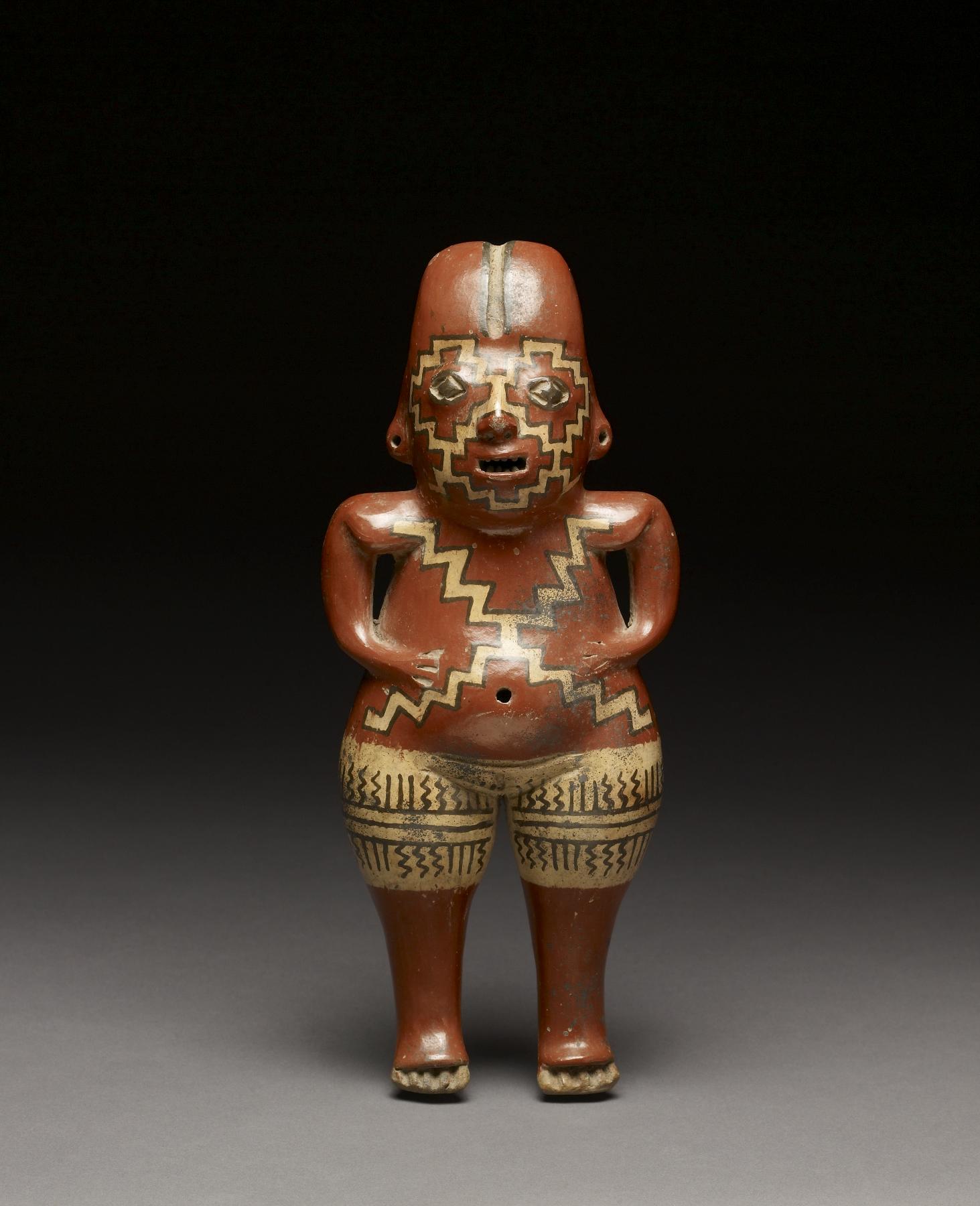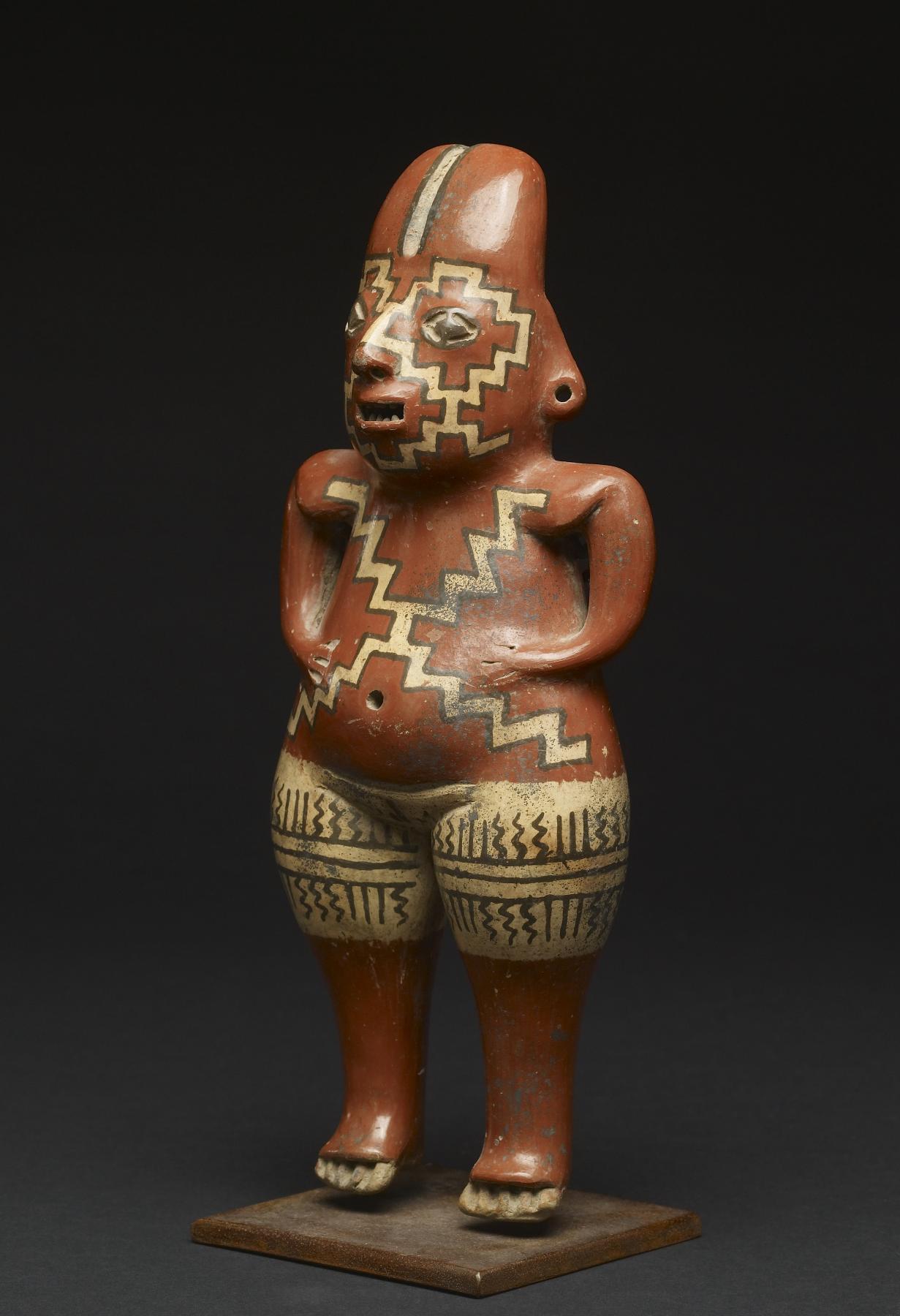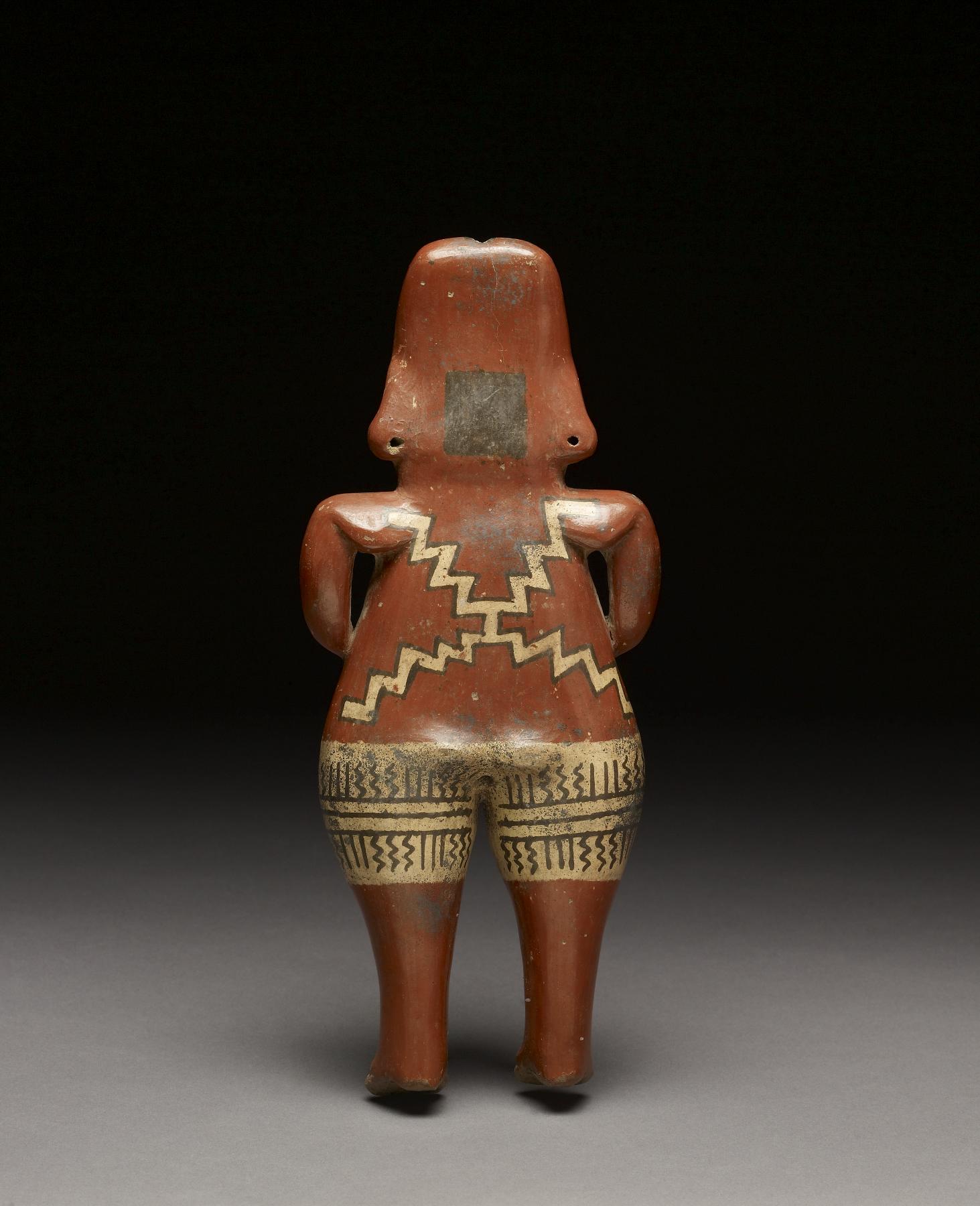Female Figure
(Ancient Americas )
The distinctive Chupícuaro style was first identified at the urban center of the same name located in southern Guanajuato. The site was covered by a reservoir in 1948 to supply water for Mexico City. During salvage and later excavations in the region, pottery vessels and figures in the Chupícuaro style were found at sites along the Lerma River and southward in the vicinity of Lake Cuitzeo in Michoacán. The Chupícuaro region had longstanding cultural and trade connections with the Valley of Mexico beginning as early as 200 BCE, indicated by similarities in ceramic figural art traditions from both regions. In addition, artistic similarities are found in objects from Jalisco, Nayarit, and Colima, strongly intimating a strategic role for Chupícuaro as a pointof- transfer and unifying power linking Central and West Mexican peoples for many centuries. Burials of members of the Chupícuaro elite typically included a large number of female figures that conceptually link death with fertility as a central precept of the Mesoamerican ideology of death, transformation, and regeneration. Larger sculptures are hollow, but the majority are solid, modeled figures. Typically, the figures' basic features are defined by modeling; the ornately woven clothing and the striking body painting, a hallmark of Chupícuaro figures, are depicted in paint. On this example, the stepped design creates larger diamond-shaped and x-patterned motifs across the woman's body. It is likely these patterns carry symbolic significance. The figure's short pants (or possibly body painting) feature a combined vertical and horizontal patterning that suggests a highly developed weaving tradition, which sadly has not survived. A curious gray-black square is painted at the base of the figure's head, a rare motif eluding interpretation.
Provenance
Provenance (from the French provenir, 'to come from/forth') is the chronology of the ownership, custody, or location of a historical object. Learn more about provenance at the Walters.
David Stuart Galleries [date and mode of acquisition unknown]; John G. Bourne, December 13, 1989, by purchase; by bequest to Walters Art Museum, 2017.
Exhibitions
| 2012-2013 | Exploring Art of the Ancient Americas: The John Bourne Collection Gift. The Walters Art Museum, Baltimore; Frist Center for the Visual Arts, Nashville. |
Geographies
Mexico, Guanajuato (Place of Origin)
Measurements
H: 9 15/16 x W: 4 x D: 2 1/8 in. (25.3 x 10.2 x 5.4 cm)
Credit Line
Bequest of John G. Bourne, 2017
Location in Museum
Not on view
Accession Number
In libraries, galleries, museums, and archives, an accession number is a unique identifier assigned to each object in the collection.
In libraries, galleries, museums, and archives, an accession number is a unique identifier assigned to each object in the collection.
2009.20.236












